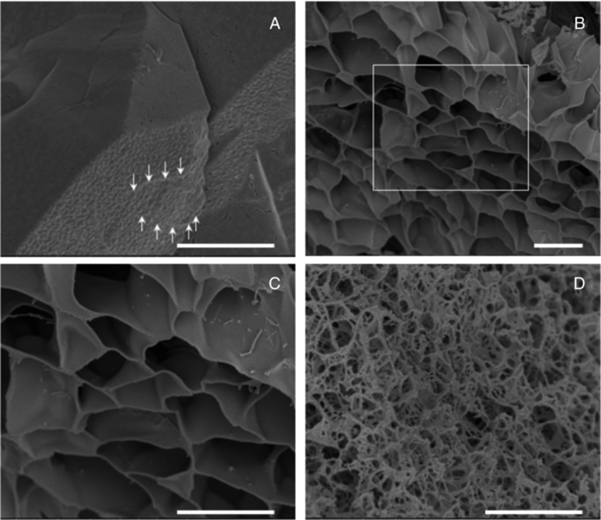

There has been a considerable interest in recent years in developing polymer gel matrixes for many important applications such as 2DE for quantization and sepn. of a variety of proteins and drug delivery system to control the release of active agents. However, a well defined knowledge of the ultrastructures of the gels has been elusive. The authors report the characterization of two different polymers used in 2DE: Gelatin, a naturally occurring polymer derived from collagen (protein) and agar, a polymer of polysaccharide (sugar) origin. Low-temp. SEM was used to examine the internal structure of these gels in their frozen natural hydrated states. Results of this study show that both polymers have an array of hollow cells that resembles honeycomb structures. While agar pores are almost circular, the corresponding Gaussian curve is very broad exhibiting a range of radii from nearly 370 to 700 nm. Gelatin pores are smaller and more homogeneous reflecting a narrower distribution from nearly 320 to 650 nm. Overall, these ultrastructural findings could be used to correlate with functions of the polymers.
